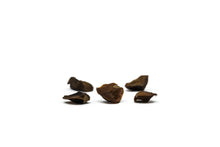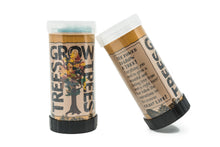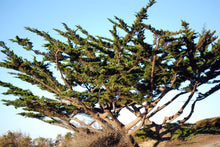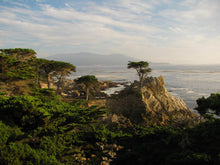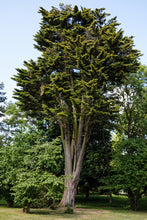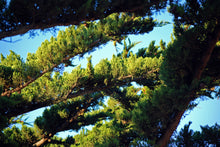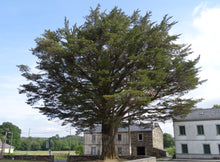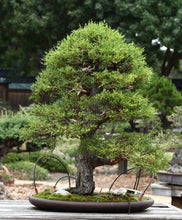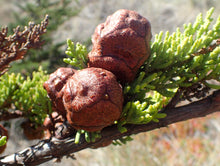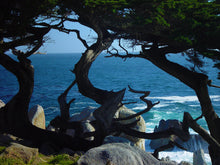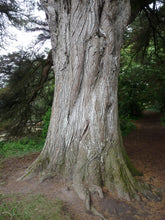
Hesperocyparis macrocarpa
-
One of nature’s true rarities and a bonafide celebrity of the tree world!
- Includes absolutely everything you need to grow a Monterey Cypress from seed
- Great for kids and adults, amateurs to experts!
- 100% guaranteed
 |
Mini-Greenhouse It's a tree nursery you can hold in your hand! |
 |
High-Germination Seed Enough high-quality seed to get at least one tree — usually more! |
 |
It's not dirt! It's a soil-less growing medium that can travel safely anywhere in the world. |
 |
Perlite This natural volcanic rock helps with aeration and drainage. |
 |
Step-By-Step Growing Instructions With these, everybody grows like a champ! |
 |
Moisture Medium |
 |
Cold Hardiness -10°F |
 |
Light Full Sun / Partial Shade |
 |
Size 40 – 100' tall / 30 – 40' spread |
 |
Lifespan 300 yrs |
 |
Growth Rate Fast Growing |
 |
Drought Tolerance Medium |
 |
Wind Resistance High |
About Monterey Cypress
Here’s your chance to grow one of nature’s true rarities and a bonafide celebrity of the tree world: The Monterey Cypress, Hesperocyparis macrocarpa (formerly Cupressus macrocarpa). The most famous example of this species is the “Lone Cypress” found in Pebble Beach, CA, where this landmark tree clings to a granite cliff overlooking the mighty Pacific and presides over a near constant parade of tourists, golfers, and jet-setters along the tony 17-Mile Drive. The Lone Cypress may be the most photographed tree in North America, and locals consider it the quintessential icon of their region. Paris has the Eiffel Tower; Egypt, the Pyramids: the Monterey Pennisula has the amazing Monterey Cypress, an often picturesque and windswept testimony to rugged endurance and the timeless beauty of the weather-worn California coastline.
Hesperocyparis macrocarpa is a species of “new world cedar” found native in a tiny range along California’s central coast and no where else on earth. The entire species was once confined to two tiny remnant groves at Cypress Point in Pebble Beach and at Point Lobos, near Carmel, CA — giving this species truly one of the very smallest native ranges in the tree world. Since their “discovery” in 1846, Monterey Cypresses have thrived in cultivation, and have become a widely planted and important coastal landscape tree far beyond their small native territory. Over the last two and a half centuries, Monterey Cypresses have been grown throughout coastal California, Oregon, and elsewhere, including in Europe, the UK and Ireland, New Zealand, and even Africa. In South Africa, a grove of Monterey Cypresses was planted near the Cape of Good Hope to commemorate South African infantry men who served the Allied cause in WW2. Today, the cherished trees have become beautiful, windswept living sculptures along the South African coast. In Kenya, Cupressus macrocarpa has been employed as a reforestation species.
Monterey Cypress is an evergreen conifer, typically medium-sized (about 60 feet tall). It takes on different forms depending on where it is planted and how old it is. The tree can become smallish, gnarled, and irregular when impacted by extreme forces of wind, weather, and sea. Alternatively, under less challenging conditions, Monterey Cypresses can grow tall and statuesque, featuring a muscular, deeply furrowed trunk rising up to an open, often a-symmetrical crown of heavy branches decorated with dense sprays of bright green foliage. Mature tree heights for this species vary from stunted 20 foot tall specimens fighting the elements to high towers over 130 feet tall. The needles of Cupressus macrocarpa are scale-like and rounded, resembling the foliage of other new world cedars. The needles give off a deep, lemony aroma when crushed. This conifer produces tiny, brilliant yellow male flowers at its foliage tips and clumps of female cones which are roundish, heavily plated, and around 1-2 inches in diameter.
Monterey Cypress trees prefer cool summers, and thrive in coastal conditions with plenty of fog and mist. They have a high tolerance for wind, drought, salt air, and poor soils. They are rapid growers, handsome and conical in youth, spreading and picturesque in age. Monterey Cypresses make excellent windscreens, especially in coastal settings. Gardeners have had some success growing this species in interior locations, but Cupressus macrocarpa tends to do better along the seashore and in other places that have at least a hint of coastal weather influence. In the words of one noted naturalist: “Monterey Cypress is certainly the most fantastic tree in North America.”
About Jonsteen's Grow Kits
Growing a tree from seed is a magical and fascinating experience for people of all ages. Our 100% guaranteed Grow Kits provide everything you need to germinate some of the world's largest and most interesting tree species from seed — seeds, growing medium, a mini-greenhouse, and detailed instructions, which lead you through the whole process, from cold-stratifying your seeds to germination and transplanting.
About Jonsteen's 100% Guarantee
If your seed fails to germinate or your seedling perishes, we are happy to provide free replacement seed. We encourage all customers experiencing difficulties growing their trees to contact us through our toll-free Tree Help Line (1-888-387-3379). You can learn more about our guarantee and replacement policy here.











